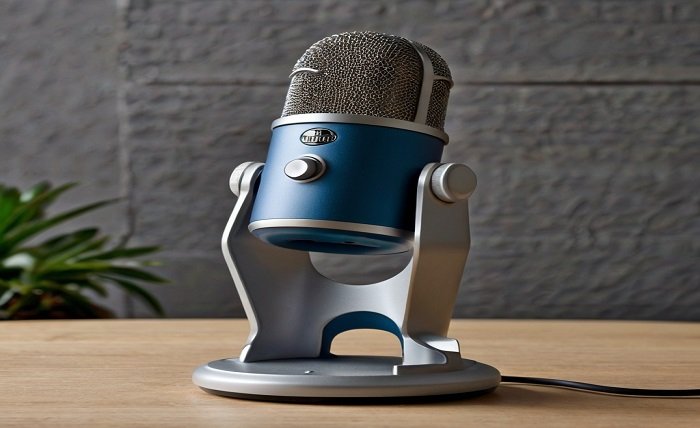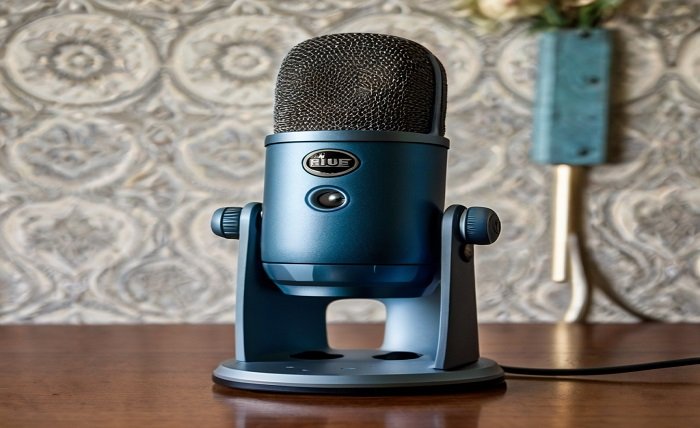One of the most well-liked and respected mics among streamers, podcasters, and content producers is the Blue Yeti Mic. It is a great option for both novices and experts because of its adaptability, simplicity of use, and excellent sound quality. We’ll examine the features and advantages of the Blue Yeti Mic in this tutorial, along with advice on how to maximize its amazing capabilities. yeticooler
Here’s an outline of the Blue Yeti Mic

A USB microphone renowned for its excellent sound quality and adaptability is the Blue Yeti Mic. It is the perfect option for a variety of recording purposes, including podcasting, streaming, and music recording, thanks to its elegant design and plug-and-play simplicity. The Blue Yeti Mic’s distinctive tri-capsule array and variety of polar patterns make it stand out in the crowded USB microphone market.
Key Features of the Blue Yeti Mic
With so many functions, you can use the Blue Yeti Mic in a variety of recording situations. Among the salient characteristics are:
Tri-Capsule Array: The Blue Yeti Mic’s tri-capsule technology records four distinct polar patterns: cardioid, bidirectional, omnidirectional, and stereo.
Multiple Polar Patterns: The four polar patterns provide versatility for a variety of recording conditions and goals.
Zero-Latency Monitoring: For live recordings and streaming, the Blue Yeti Mic’s headphone port is essential for providing zero-latency monitoring.
Gain Control: The microphone has an accessible gain control knob that allows you to change the device’s sensitivity.
By using a simple mute button: you can easily manage your recording sessions without modifying software settings.
Benefits of Using the Blue Yeti Mic
There are several advantages to selecting the Blue Yeti Mic that improve the recording process. Some of these advantages include:
High-quality audio: Because it has studio-caliber sound, the Blue Yeti Mic produces a sound that is ideal for professional recordings.
Versatility: The Blue Yeti Mic’s several polar patterns and settings make it suitable for a wide range of recording tasks.
Easy to Use: There is no need for a difficult setup thanks to the plug-and-play USB capabilities.
Durability: The sturdy design of the Blue Yeti Mic guarantees years of use.
Reasonably priced: The Blue Yeti Mic is a fantastic value for the money when you take into account all of its features and quality.
Setting Up the Blue Yeti Mic
The Blue Yeti Mic is simple to set up because of its plug-and-play construction. Here’s a how-to manual to get you going:
Unpack the Mic: Take the Blue Yeti Mic and its accouterments out of the container with care.
Attach the USB Cable: Insert the USB cable that comes with the Blue Yeti Mic into its bottom, then attach the other end to your computer.
Choose the Mic as the Input Device: Open the Sound Preferences on your PC and choose the Blue Yeti Mic as the input device.
Modify Settings: To change the settings to suit your needs for recording, use the polar pattern picker and gain control knob.
Test the Mic: To be sure everything is operating as it should, do a little audio check. post-officehours
Recording Techniques with the Blue Yeti Mic
Use these recording methods to maximize your Blue Yeti Mic:
Setting up: Take the Blue Yeti Mic and place it on a sturdy surface near the sound source.
Polar Patterns: Select the polar pattern that works best in your recording situation. Use the omnidirectional pattern to capture ambient sounds, and use the cardioid pattern for solo recordings.
Gain Control: To avoid distortion and guarantee crystal-clear audio, adjust the gain control.
Pop Filter: To reduce plosive noises and enhance audio clarity, use a pop filter.
Audio Monitoring: Make the required modifications by listening to your recording in real time.
Using the Blue Yeti Mic for Podcasting
Podcasting is one of the primary uses for the Blue Yeti Mic. Podcasters love it for its adaptability and crystal-clear audio quality. Here are some pointers for using your podcasting setup with the Blue Yeti Mic:
Set Up in a Quiet Room: Recording in a quiet room reduces background noise.
Employ the Cardioid Pattern: Designed to capture sound directly in front of the microphone, the cardioid pattern is ideal for solo podcasting.
Adjust the Gain Levels: Correctly adjust your gain levels to avoid distortion and clipping.
Monitor Your Recording: To guarantee the highest audio quality, use the headphone jack for real-time monitoring.
Live Streaming with the Blue Yeti Mic
The Blue Yeti Mic’s dependable performance and excellent audio quality have also made it popular with live streamers. Take into account these suggestions to enhance your live-streaming experience:
Select the Best Polar Pattern: Depending on your arrangement, choose the polar pattern that best meets your needs. You can use the bidirectional pattern for interviews, but the cardioid pattern works best for solo broadcasts.
Control Background Noise: To reduce unwanted noise, place the Blue Yeti Mic away from loud areas and adjust the gain.
Make use of Zero-Latency Monitoring: To guarantee that your audio and video are in sync during live streaming, this function is essential.
Interact with Your Audience: Crystal-clear audio contributes to sustaining audience interest, so ensure that your sound is clean and sharp.
Music Recording with the Blue Yeti Mic
The Blue Yeti Mic, which provides studio-quality sound in a USB format, is also appropriate for recording music. The Blue Yeti Mic produces great results, whether you’re recording instruments or vocals. The following advice can help you record music:
Choose the Stereo Pattern: To record a broader sound field while recording instruments or voices in stereo, choose the stereo pattern.
Employ a Pop Filter: A pop filter improves clarity and lessens plosive noises in vocal recordings.
Place the microphone in the proper position. Appropriately: To get the best audio quality, position the Blue Yeti Mic at the ideal distance from the sound source.
Watch the Recording: You can listen to your recording in real-time and make any necessary changes using the zero-latency monitoring tool.
Voiceover Work with the Blue Yeti Mic
The Blue Yeti Mic produces crisp, high-quality audio, making it a very useful tool for voiceover work. Use these pointers to achieve the greatest voiceover results:
Employ the Cardioid Pattern: This technique reduces background noise while recording front-of-house sound, making it perfect for voiceovers.
Modify Gain Levels: To prevent distortion, adjust the gain to the proper level.
Employ a Pop Filter: A pop filter enhances audio clarity by reducing plosive noises.
Monitor Your Recording: To guarantee the highest audio quality, use the headphone jack for real-time monitoring.
Common Issues and Troubleshooting
Even though the Blue-Yeti Mic is usually dependable, there are a few frequent problems that you may run into. Here are some pointers for troubleshooting:
No Sound: Verify that the Blue-Yeti Mic is selected as the input device in your computer’s settings and that the USB wire is firmly inserted.
Background Noise: To cut down on background noise, place the microphone away from loud areas and use the gain control.
Reduce the gain: and ensure that the microphone is not too close to the cause of the audio distortion.
Latency Issues: To fix latency issues during live recordings, use the zero-latency monitoring option. technewztop
Accessories to Enhance Your Blue Yeti Mic
Use the following add-ons to make your Blue-Yeti Mic experience even better:
Pop Filter: Enhances audio clarity by reducing plosive noises.
Shock Mount: Protects the microphone against handling noise and vibrations.
Boom Arm: Reduces workplace clutter and offers adjustable posture.
Foam Windscreen: Reduces breath and wind sounds when recording.
Carrying Case: Protects your Blue-Yeti Mic during transportation.
Why Choose the Blue Yeti Mic?
You may be wondering why the Blue-Yeti Mic is different from the many other mics available. For the following reasons,
Versatility: Its diverse polar patterns and gain control enable its application in a range of recording scenarios.
Simple Operation: The plug-and-play feature makes for a hassle-free installation.
High-quality audio: Provides sound at a budget-friendly studio level.
Durability: a sturdy build that makes it built to last.
Broad Compatibility: Doesn’t require extra drivers to operate on Windows or macOS.
In summary
For a range of recording applications, the Blue-Yeti Mic is a dependable and adaptable microphone that produces high-quality sound. Whether you’re performing voiceover work, podcasting, streaming, or recording music, the Blue-Yeti Mic delivers outstanding performance and user-friendliness. Content makers love it because of its solid build, zero-latency monitoring, and numerous polar patterns. You may get the most out of your Blue-Yeti Mic and capture recordings that sound excellent by using the strategies and advice provided in this article. modern-mullet
FAQ
Can I use a smartphone with the Blue-Yeti Mic? Yes, if you have a USB adaptor, you can use the Blue-Yeti Mic with a smartphone. Make sure the adapter fits the USB port on your phone.
How should I clean my Blue-Yeti Mic? Wipe the microphone’s exterior with a gentle, dry cloth. Steer clear of putting moisture or abrasive substances near the mic’s apertures.
Which programs are most compatible with the Blue-Yeti Mic? The majority of recording programs, such as Audacity, GarageBand, Adobe Audition, and OBS Studio, are compatible with the Blue-Yeti Mic.
Is it possible to use the Blue-Yeti Mic for gaming? Yes, the Blue-Yeti Mic is indeed excellent for gaming. It’s ideal for broadcasting and in-game conversations because of its crystal-clear audio quality and zero-latency monitoring.
How can I use the Blue-Yeti Mic to cut down on background noise? To reduce background noise, use the cardioid polar pattern, adjust the gain setting, and place the microphone away from noise sources. It might also be beneficial to use a foam windshield and pop filter.

